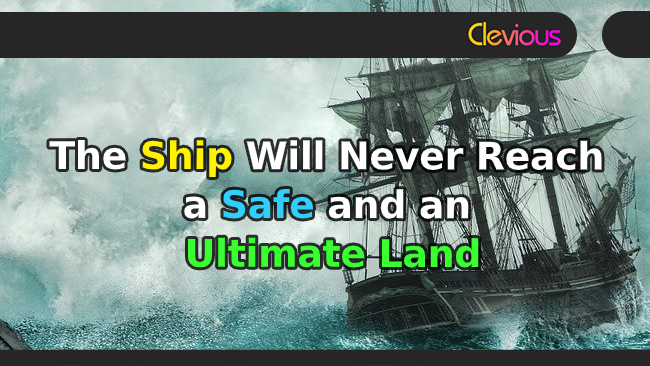The Ship Will Never Reach a Safe and an Ultimate Land
In the previous article “Reasoning Gaps: The Reason to Replicate Research Part II”, I concluded the discussion about research replication for the purpose of rectification of reasoning problems found in previous researches with the metaphor of a ship in the middle of a sea as follows:
“For a clearer picture, think of it like a ship in the middle of a sea, although the bad weather and distractions of huge waves, it keeps moving in the right direction thanks to a group of knowledgeable persons on board, driving it, exchanging knowledge and correcting each other.”
Unlike the previous articles (Part I & Part II) in which I argued in favor of research replication based on my interpretations of Popper’s view of science; this time, it’s going to be different: I will try to explain the reason why the metaphor of the ship is used and why the ship will never reach a safe and an ultimate land.
Why Have I Used The Metaphor of the Ship?
The function of any metaphor is mostly pedagogical, although it fails to adequately reflect the reality of phenomena with their complexities, it greatly helps to clarify the matter at hand for learners.
In this case, the metaphor of the ship was not employed for the purpose of simplification only, but also to refer to the Scientific Community and Paradigm terms used by the American philosopher, historian, and physicist Thomas Kuhn (1922 – 1996), introduced in his influential book “The Structure of Scientific Revolution” (1962) which explains that science is in part possible thanks to the different groups of scientists, sharing the same principles, working together to resolve problems in their way, and hoping to achieve the same goals*.
The metaphor of a ship in the middle of a rough sea struggling to move in the right direction, therefore, brings back many characteristics that the scientific community and Paradigm terms carry.
The story told last time was the happy part of the question; the inconvenient part of it is that the ship will never reach a safe and an ultimate land.
*(Because there can be many, they could be competitive.)
Why Will it Never Reach a Safe and an Ultimate Land?
There’s no doubt that Thomas Kuhn viewed science from a different angle of that of Karl Popper: he viewed it from a historical perspective and observed that it evolves in a circular way similar to a certain extent to the evolution of the seasons of the year, the cycle is known as the Kuhn Cycle (See figure 1); Although the two perspectives have been reconciled in some of their parts, the unavoidable truth is that this view radically opposes the traditional idea that believes that science evolves through the accumulation of knowledge.
The central part of this evolution is the ideas of a paradigm and paradigm shift. Their starting point is not possible without the philosophical assumptions shared by the scientific communities that hold them (pre-science). After their births, they experience moments of happiness (normal science), moments of doubts (Model Drift), moments of sadness (Model Crisis) and moments of revolution (Model Revolution) followed by a new beginning of a new paradigm (Paradigm Shift).
 |
| Figure 1 |
- Normal Science: Scientific research is not hindered by the model’s limits.
- Model Drift: At this stage, problems and anomalies start to accumulate, they arise and the paradigm finds difficulty to address them.
- Model Crisis: The paradigm reaches a critical moment and becomes unable to address the new challenges in its way at all.
- Model Revolution: At this moment some experts start to promote the idea of the need for a new paradigm to replace the broken one.
- Paradigm Shift: These serious attempts will be crowned with a successful paradigm shift, the old is abandoned and the new one replaces it.
References
NB: The references above have been built with a web application called ZoteroBib. For more information, please check the article I wrote about this, titled “How to Cite and Build a Bibliography in Under 10 Minutes!”.

